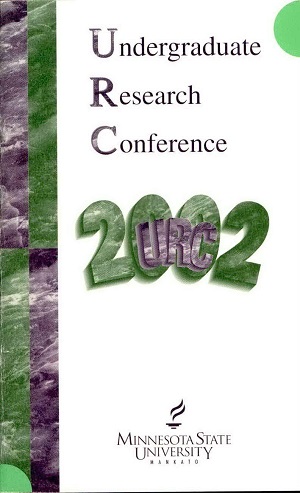Carlson's Trophic State Index and Southern Minnesota Lakes
Location
CSU
Student's Major
Chemistry and Geology
Student's College
Science, Engineering and Technology
Mentor's Name
Bryce Hoppie
Mentor's Department
Chemistry and Geology
Mentor's College
Science, Engineering and Technology
Description
Carlson's Trophic State Index (TSI) uses phosphorous and chlorophyll-a concentrations as well as Secchi disk readings to measure the quality of Mankato-area lakes. The purpose of our research is to determine if heterogeneity exists between three distinct sites within each lake. EPA approved techniques were used to obtain Secchi disk readings and to measure the concentration of chlorophyll-a and phosphorus. Preliminary results indicate that heterogeneity exists, between phosphorus concentrations at different points on each lake. Spatial variability was also found in chlorophyll-a concentrations. Heterogeneity was not found in the Secchi disk data. Further data analysis will determine if heterogeneity exists in the TSI data for each lake. Initially, these results suggest that lakes are not well mixed. Multiple sampling sites, therefore, should be analyzed to accurately measure the trophic state of a lake.
Carlson's Trophic State Index and Southern Minnesota Lakes
CSU
Carlson's Trophic State Index (TSI) uses phosphorous and chlorophyll-a concentrations as well as Secchi disk readings to measure the quality of Mankato-area lakes. The purpose of our research is to determine if heterogeneity exists between three distinct sites within each lake. EPA approved techniques were used to obtain Secchi disk readings and to measure the concentration of chlorophyll-a and phosphorus. Preliminary results indicate that heterogeneity exists, between phosphorus concentrations at different points on each lake. Spatial variability was also found in chlorophyll-a concentrations. Heterogeneity was not found in the Secchi disk data. Further data analysis will determine if heterogeneity exists in the TSI data for each lake. Initially, these results suggest that lakes are not well mixed. Multiple sampling sites, therefore, should be analyzed to accurately measure the trophic state of a lake.



